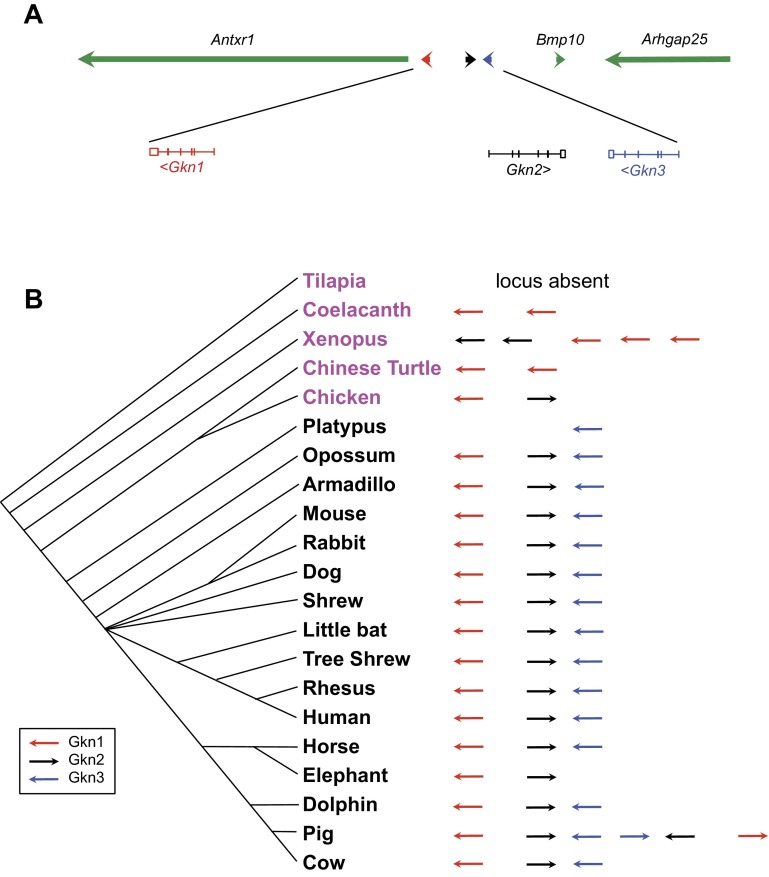Fig. 2.
Gkn3 is within the gastrokine gene cluster, whose location and orientation are evolutionarily conserved. The gastrokine locus occurs as a cluster of conserved, paralogs, located between Antxr1 and Bmp10 as represented in the mouse (A). Gkn1 is closest to Antxr1, ∼38.5 kb away. Then ∼28 kb downstream is Gkn2, encoded on the opposite strand, followed by Gkn3, ∼18 kb downstream, in the same orientation as Gkn1. Gkn3 is ∼49.5 kb away from Bmp10, which is in the same orientation as Gkn2. This locus of multiple gastrokine paralogs is conserved from mammals to coelacanths, suggesting its origin in a fish common ancestor (B). The number (3) and location of the gastrokines, as well as their orientation, are largely conserved in all mammals. Nonmammalian species are highlighted in magenta. Arrow colors indicate which of the mouse gastrokine genes the target most closely resembles based on National Center for Biotechnology Information (NCBI) blasttp results, and the direction of the arrows corresponds to genomic orientation.

